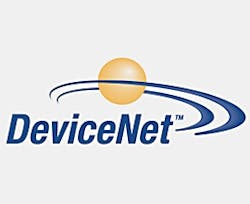The core technologies may already be in place, but achievement and use of an Internet of Things is not yet a near-term goal for most manufacturing organizations. However, the Internet of Things concept of connecting everything possible to a network is leading ODVA to look into a near-term, achievable goal for manufacturers using DeviceNet.
By developing enhancements that can expand DeviceNet to low-cost, simple industrial devices typically hardwired into industrial networks, ODVA seeks to make it cost effective for users to connect many new types of devices into DeviceNet. To drive this expansion of DeviceNet, ODVA has created a special interest group (SIG) for the “DeviceNet of Things.”
ODVA’s goal for this SIG is to help eliminate the need for “expensive and complex gateways by using a blended DeviceNet-EtherNet/IP system via ODVA’s Common Industrial Protocol (CIP)” according to the ODVA release noting the formation of this SIG.
“The Internet of Things movement has established a basis for innovation of new smart ‘things’ in the automation world, but the cost of Ethernet is still too high for many industrial devices,” says Katherine Voss, president and executive director of ODVA.
By creating a DeviceNet of Things, Voss says users will be provided “cost-competitive connectivity today for devices previously not connected [to the plant network], as well as systems engineered for the future that can evolve in step with the Internet of Things as the cost of Ethernet continues to decline.”
ODVA members currently signed up to participate in the SIG include Eaton Electrical, HMS Industrial Networks, Omron, Panduit, Rockwell Automation, and Weidmüller Interface. The initial phase of the SIG’s work will focus on development of:
• An IP20-rated physical layer connection system to reduce device connection cost and installation time;
• An auto addressing scheme that eliminates the need to set node addresses; and
• Visibility into devices that, until now, have not had the ability to provide diagnostics.
The first set of DeviceNet specifications addressing the findings of this SIG are expected in 2015, with products following shortly after publication of the enhancements within the specification, according to ODVA. Future goals for the SIG include enhancements for an IP67-rated physical layer connection system.


